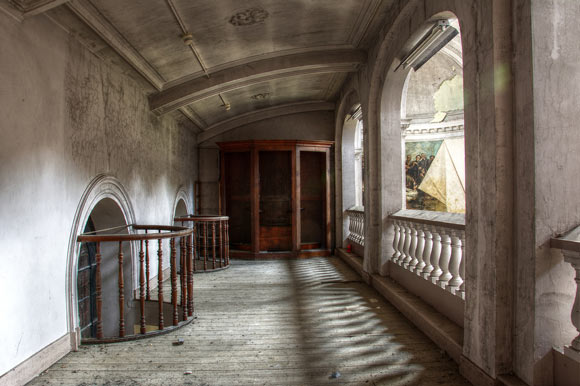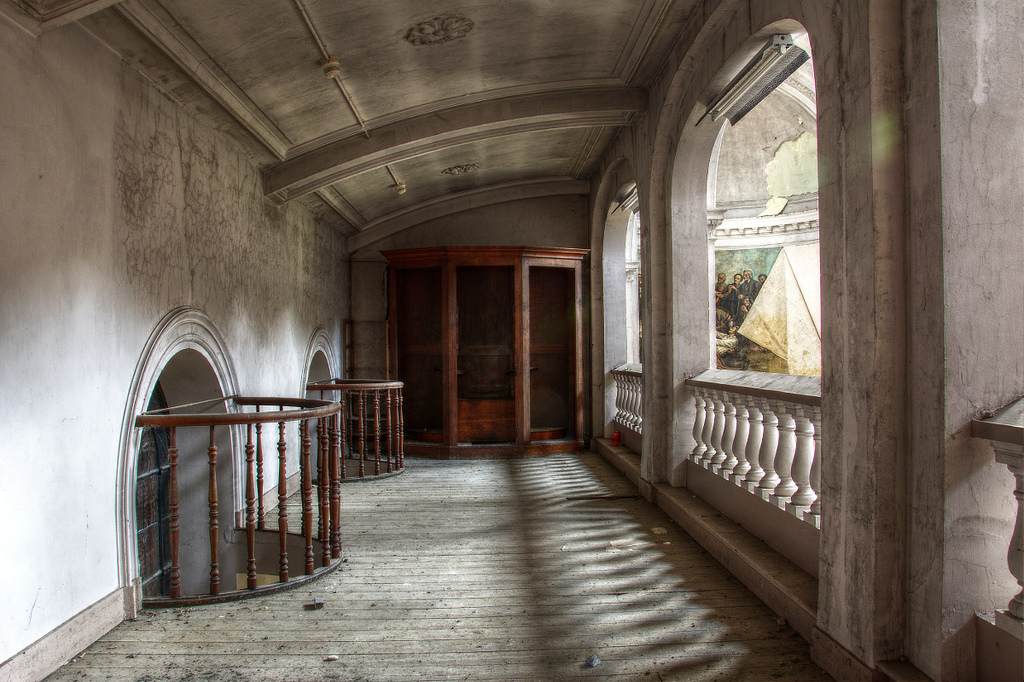
The first time you see Cody Curtis on screen your heart breaks. She’s an athletic 54-year-old with wrinkle-free olive skin and stylish gray hair, the kind that’s attractive because it’s premature. She’s beautiful and vibrant, even as she’s living through the end stages of a terminal disease. And she’s a contrast to the worn and weary men—broken by illness, made brittle by resolve—we’ve encountered so far in the movie. Because you’re watching How to Die in Oregon, a 2010 award-winning documentary, you know immediately that finishing the film means watching Cody die.
We see Cody hiking up a trail surrounded by Oregon evergreens, flanked by two female friends. All three are wearing sneakers and rain slickers. Cody’s shortness of breath is loud and staccato, huffing in the sound man’s microphone. She tells them how good she is feeling today and invites them to come shop in her closet. Before I die, she means. One of the friends mournfully laughs and asks if she can have Cody’s Volvo. It’s a question that reminds us that death doesn’t skip over the beautiful, the educated, the upper middle class. Death is the destination we’re all hiking toward.
If you look closely, How to Die in Oregon is also a film about the unequal distribution of end-of-life care.
This year is the twentieth anniversary of Oregon’s passage of Measure 16, the “Death with Dignity” law that allows those who are terminally ill to receive lethal prescriptions from their doctors if they have six months or less to live. How to Die in Oregon is a film about patients who choose to use aid in dying. It’s a film about nuance and controversy and charging at the inevitable. But if you look closely, How to Die in Oregon is also a film about the unequal distribution of end-of-life care.
We’re introduced to Cody by director Peter Richardson because her story is heartbreaking and because Cody is made for the role. She has a poise and charisma we don’t expect of cancer patients in their final days. But while Cody’s energy and age make her seem like an anomaly, a bright star in an otherwise grim death-and-dying story, in most other ways she is demographically consistent with those in the US who can choose the death they want.
Vast inequalities exist across the American end-of-life landscape, most often along the lines of socioeconomic status (SES), which is in part determined by income, occupation, and education and characterized by privilege, power, and control. According to the American Psychological Association, “research has elucidated several areas where SES appears to significantly affect end-of-life issues. Two such areas include the early detection of life-threatening illnesses and the quality of life for people so diagnosed.” Those who earn less than $25,000 a year are 2.65 times more likely to be diagnosed with late-stage cervical cancer and 1.5 times more likely to be diagnosed with late-stage colon and lung cancer. Diagnosis often comes too late for this group because healthcare is inaccessible, even financially impossible. Those who earn more than $25,000 per year are 2.3 times more likely to enroll in hospice, a program that provides care, often in the patient’s home, for those who are actively dying. They’re more likely to have gone to college, to live in higher median income neighborhoods, and to have better knowledge of what end-of-life choices they have. Healthcare was being rationed long before the public began debating the Affordable Care Act. But it’s been rationed by class, a fact that has long been overlooked.
Hospitals are dangerous places. Often just getting out of one can improve your chances of living longer.
Regardless of what you think about aid in dying, any discussion regarding the quality of end-of-life care includes the very same keywords that advocates of aid in dying champion: choice, control, dignity, comfort, and home. Annual reports from the states where aid in dying is legal show that those seeking prescriptions for lethal drugs look a lot like Cody Curtis: they are white, well educated, married, dying at home, diagnosed with cancer, and primarily concerned with their loss of autonomy, dignity, and quality of life. They’re also enrolled in hospice, a fact that isn’t surprising: the demographics of hospice users, while comprised of a broader section of Americans, are surprisingly similar. They show that hospice enrollment, like aid in dying use, is too often determined by socioeconomic factors.
Studies show that enrollment in hospice makes patients’ last days more comfortable. Hospice care means better pain management, greater comfort because the patient is at home, and better quality of death. Hospitals are dangerous places. Often just getting out of one can improve your chances of living longer. Aggressive treatments that can’t cure a terminal disease (and often only painfully prolong it) put an enormous toll on patients, costing them comfort and even consciousness. Various researchers have shown that those in hospice can even live longer than those in standard hospital care—by as much as two months. There’s a huge disparity, however, between white and nonwhite enrollment in hospice, despite the increasing percentage of elder nonwhites in the US population. The reasons for this disparity are complicated—but they’re also cultural, financial, and systemic.
Conversations about hospice and end-of-life care often occur only with patients who independently choose to have them.
Medicare didn’t cover hospice until 1982. But when the rules of coverage were designed they required that a patient give up curative treatments to be eligible. Minority groups were essentially structured out of coverage. For example, African-American enrollment has been consistently low since Medicare’s inception. “We know African-Americans tend to have more aggressive treatment preferences, enroll later and are more likely to withdraw from hospice. That’s clear evidence, to me at least, that the benefit is not designed well and prevents large groups of people from getting the care that they want,” a doctor told American Medical News two years ago.
The default position of medicine has been to pursue aggressive care: one last round of chemotherapy that won’t offer a cure, a hip replacement for a patient who is in the end stages of heart disease. It’s hard for doctors to tell patients that they are dying; few are trained in how to do so and there aren’t many incentives to encourage these conversations. In part this is a result of medical culture and education, in part it is a result of coarse politics. In 2011 doctor compensation for end-of-life discussions was cut from the Affordable Care Act after a media blitz put “death panels” on the tip of everyone’s tongue. (Although this month the federal government has proposed paying doctors to have these conversations.)
As a result conversations about hospice and end-of-life care often occur only with patients who independently choose to have them. Only those who have the desire for control and choice and the resources to pursue them are guaranteed to be informed of their options, including hospice. In such an environment, minority and low-income groups often aren’t getting quality care because the medical community has failed to win their trust, to inform them of their choices, to ask them how they want to die, even to tell them that they are dying.
In many of these cases, fear of the medical community is well founded. History has proven that predatory, racialized research and treatment practices can be deadly. The Tuskegee Syphilis Experiment studied infected black sharecroppers for decades but never treated them. Several US states have a history of performing forced sterilizations on incarcerated and institutionalized black women. The suggestion that a dying patient consider hospice can also sometimes sound insensitive, as if some lives are not worth the effort or cost of aggressive treatment.
Other minority patients may not know about their end-of-life options because they’ve never had access to a personal doctor (despite passage of the Affordable Care Act, it is estimated that 30 million Americans are still without health insurance). Either they experience language or financial barriers, or their immigration status prevents them from seeking medical help.
Religious beliefs can also prevent patients from seeking care or from relying on anything other than family-provided care. Faith in God’s wisdom and power, hope that miracles will cure disease, is real in many lives. Pain and suffering can be, to believers, both our human right and our redemption.
If access to aid in dying is ultimately to be considered a right, available to everyone, advocates will have to engage in the project of changing how we talk about and provide end-of-life care for those who don’t look like Cody.
Patients can also be kept from enrolling in hospice because they don’t have anyone at home to care for them. According to AARP, a few states provide payment to caregivers, whether they’re family members or not, but the coverage is little known and complicated to organize.
The total number of those who use hospice has been steadily growing but the numbers are misleading. Today about 45 percent of those who die do so in hospice care. Patients may enter hospice when they have six months or less to live, but the length of stay for 35.5 percent of patients is less than seven days. The annual report issued by the National Hospice and Palliative Care Organization notes that while 66 percent of hospice patients die at their place of residence (whether it’s their home, a nursing home, or a residential facility) a full 34 percent die in a hospital or hospice facility. Yet it’s clear that for various religious, racial, economic, political, and cultural reasons, the ability to choose how you die is less available to those on the lower rungs of the class ladder.
After Oregon legalized aid in dying in 1994, it took another fourteen years and countless legal challenges for another state to do so. Washington passed a Death with Dignity bill in 2008, also by ballot initiative. On New Year’s Eve of 2009 Montana became the third state to legalize aid in dying, this time by Supreme Court decision. (Challenges to the decision have been ongoing ever since). In May of 2013, Vermont became the first state to pass a Death with Dignity law via the legislature. And in January of this year the New Mexico Supreme Court approved aid in dying (it is now on appeal). A handful of states, including New Jersey and Connecticut, have active movements or pending legislation.
Proponents of these efforts argue that legalization helps spur the necessary increase in knowledge about end-of-life care, that those who live in states where public conversation about aid in dying has taken place are more knowledgeable about end-of-life planning, choices, and rights. They claim that doctors have had to engage in conversations about end-of-life issues because of the legalization of aid in dying in their states. A National Journal poll last year showed that knowledge of hospice in Washington and Oregon was eight percentage points higher than the national average.
In the three years since How to Die in Oregon garnered the Sundance Film Festival grand prize, the legalization movement has continued to gather momentum. Compassion & Choices, the nation’s largest aid-in-dying advocacy group, has shown that many fewer patients use the lethal drugs than receive them. Those who do use the drugs tend to be highly educated, self-directed, and independent, less susceptible to coercion. In the movie, Cody Curtis beautifully articulates the desire she has to maintain her dignity and choice. But if access to aid in dying is ultimately to be considered a right, available to everyone, advocates will have to engage in the project of changing how we talk about and provide end-of-life care for those who don’t look like Cody. If a humane death is a human right, then we’re obligated to remove existing class obstacles to good end-of-life care.
